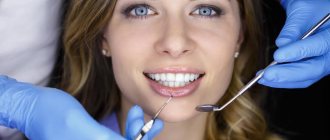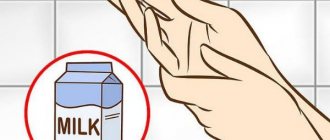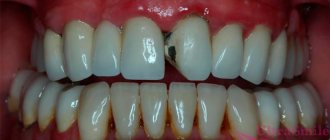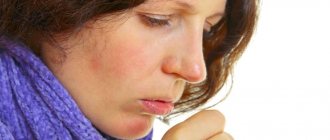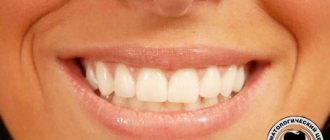Yellowing of the eyes is a phenomenon indicating a pathological condition of some nodes of the body. The problem is popularly called “jaundice” and is associated with excessive amounts of bilirubin in the tissues.
It is undesirable to ignore jaundice, as it often indicates the development of diseases of the liver, blood and gastrointestinal tract. In today’s material we’ll talk about what causes yellow eyes, how dangerous this phenomenon is and how to get rid of it.
Interesting? Then be sure to read the article below to the end. We assure you that the information presented will be useful to everyone.
Reasons for changing shade on the skin of the palms
Our body is a coherent system that depends on the work of all organs. If at least one of the organs performs its function poorly, the system malfunctions and the body indicates in possible ways the existence of a problem - in our case, these are yellow palms.
The reason for the appearance of yellowness on the palms may be a dysfunction of the liver or choleretic bladder. Processes harmful to the body can be provoked by the following diseases:
- cirrhosis of the liver;
- inflammatory processes in the choleretic ducts;
- inflammatory processes in the gallbladder;
- hepatitis;
- gallstone disease.
Yellow hands and fingers
But you shouldn’t immediately fall into despair, because yellow palms can indicate “false jaundice.” This disease does not pose a particular danger to the body, since only external signs of the disease appear, and the functioning of the internal organs is not impaired.
Another thing is if you are worried not only about the yellowness of your hands, but also about accompanying symptoms, such as abdominal pain, painful sensations when urinating, etc., without hesitation, you should consult a doctor to conduct a full examination.
In any case, only a specialist can confirm or refute the diagnosis, so do not delay going to the doctor.
Changing the color of the growing point of monopodial orchids
The base of the top leaf, where growth continues, is the growing point of the orchid. The cause of yellowing of the growth point is:
- Suboptimal growing conditions;
- Failure to comply with the watering regime;
- Infectious diseases.
Important! Orchid roots do not tolerate stagnant water, so the remaining moisture from the trays must be drained.
If the damage to the growing point is too severe, the orchid will stop growing upward and will most likely die.
If the growing point is damaged, the orchid dies.
If, thanks to good immunity, the orchid survives, it can form a baby on the stem or flowering arrow and continue to grow.
The effect of carotene on skin color
Excessive consumption of certain fruits, vegetables or root vegetables can also cause yellow palms. Review your diet, maybe lately you have become interested in eating carrots, pumpkin, squash or tangerines.
When consuming products containing keratin, most of the substance is absorbed into the blood and distributed throughout the human body. Due to the fact that the skin of the palms contains less of the coloring substance melanin, an excessive amount of keratin in the body may manifest itself as yellowish palms.
Yellowing of the sclera after alcohol intoxication
Yellow eyes are a sign of pathology of the digestive system
Cases when jaundice develops due to poisoning deserve special attention. A striking example is the yellowing of the sclera after alcohol intoxication.
As a rule, excessive amounts of alcohol consumed provoke improper liver function and, as a result, bilirubin accumulates in the body.
This condition does not require profile neutralization, since it is a natural reaction of human internal organs to poisoning.
In addition to alcohol intoxication, jaundice can be caused by:
Yellowness is a sign of a serious illness
Yellowness of the palms can hide serious diseases, such as infectious jaundice can be caused by hepatitis B, A, C. In the acute form, the body temperature may rise, nausea, and abdominal pain may appear.
Another serious disease that causes yellow palms is anorexia nervosa. The disease is accompanied by a number of symptoms:
- fear of gaining weight;
- obsessive desire to lose weight;
- disturbances in a person’s consciousness about his own appearance (even with exhaustion of the body, a person considers himself very fat);
- rapid weight loss (15% of usual body weight);
- changes in skin color, yellowing of the palms;
- aggressiveness;
- drowsiness, fatigue.
This disease most often occurs in adolescents and women, which can be triggered by severe shock. The disease initially manifests itself in a sharp change in behavior and refusal to eat. Refusal of normal food provokes the development of other, more complex diseases. In this case, it is important to identify the problem in time and contact a specialist.
What causes the yellowing of the stem?
The reasons for this phenomenon can be of a different nature, including:
- Natural aging of the plant;
- Violation of care rules and growing conditions;
- A sharp change in the microclimate after purchasing an orchid;
- Damage by pests or phytopathogenic microorganisms.
There are various reasons why an orchid stem turns yellow.
If the flower is provided with appropriate care, it will recover over time and the stem will acquire a healthy appearance. So why did the orchid’s stem turn yellow and what are the main reasons?
Malaise or physiological process?
If the leaves and stem of a young orchid turn yellow, then the cause of aging disappears on its own. Further actions should be aimed at establishing the cause of the disease.
The aging of a flower is related to its life cycle . Life expectancy is determined by the type of orchid and can range from 4 to 17 years.
Having ruled out aging as the cause of yellowing of the stem and leaves, the source of the threat must be sought in mistakes made when caring for the orchid.
Mechanical damage
Yellowing may result from falling or damage to part of the plant.
If the wound is not disinfected in time, it can become an entry point for various infections and cause rotting of the stem. With proper care, the injured area will heal and the orchid stem will restore its natural color.
Lack or excess of moisture
Insufficient watering of the orchid is observed much less often than excess moisture. Its symptoms are :
- The stem turns yellow from top to bottom and at the base;
- Yellowing of leaf tips;
- Light roots;
- Lethargy and wrinkling of leaves.
Overwatering an orchid can have a bad effect on the orchid's flower stalk.
When these signs appear, it is worth assessing the moisture content of the substrate :
- Lift pieces of bark from the top layer of soil;
- Stick a wooden stick into the soil along the wall of the pot and check after a couple of minutes. If it becomes wet, then the substrate is probably waterlogged;
- Weigh the orchid with the pot in your hands; if it is light, then the soil is dry.
A typical mistake of novice gardeners is waterlogging the soil, which is the most common cause of yellowness of the stem and leaves. You can notice it by a number of signs :
- Yellowing affects both the lower and upper leaves, as well as the stem;
- Black spots often appear on the surface of a yellowed leaf blade;
- The roots become dark in color.
Important! A humid environment promotes the appearance of microbial infections that cause root rot.
Often, waterlogging of the soil occurs when the orchid is in the resting phase. During this period, it does not need to be fed and watered frequently ; excess moisture accumulates in the soil, which causes:
- Yellowing of the stem and leaves;
- Root rotting;
- Wilting of the plant.
If signs of soil waterlogging appear, you need to assess the condition of the root system and, if necessary, replant the flower.
Sunburn and overheating
Yellowing of an orchid's trunk is often caused by excessive lighting or overheating :
- When the flower is exposed to direct sunlight for a long period;
- Exposed to hot air from an air conditioner;
- Near the location of the orchid there is a heating radiator that is too hot, and the humidity in the apartment is below 50%.
The situation can be corrected by moving the flower to a suitable place , after which the plant will quickly restore its appearance.
Lack of lighting
Orchids grow and bloom well on northern windowsills, but in short daylight conditions they need lighting. Lack of lighting causes yellowing of leaves and stems and slows down the process of photosynthesis.
When there is insufficient light, additional lighting is provided for orchids.
For additional illumination in autumn and winter, use a special phytolamp, which does not harm the plant and does not dry out the air. The lamp should be located at a distance of no closer than 20 cm from the orchid; daylight hours should be extended to 12 hours.
Lack of light is the main factor in the lack of orchid flowering in winter and decreased immunity.
Fungal or bacterial infections
If, despite efforts, it is not possible to restore the color of the stem, the root system may be affected by fungi .
As soon as the disease is discovered, the plant is urgently isolated from other flowers to prevent the spread of infections . After this, a number of recreational activities :
- The flower is removed from the soil, the roots are washed with warm water;
- All unhealthy roots are removed with a disinfected instrument;
- The sections are rubbed with crushed charcoal;
- If affected by fungi, the roots are soaked for 15 minutes in a 0.2% solution of Fundazol;
- If affected by bacterial rot, spray with Bordeaux mixture.
Treatment of the roots can be carried out by lowering the pot into water with a dissolved preparation.
Yellow palms due to jaundice
Jaundice is a disease characterized by the appearance of a yellowish tint on the skin and mucous membranes. Yellow spots are especially noticeable on the palms, lower part of the tongue, and also on the eyeballs.
To understand the causes of jaundice, you should know that yellowing of the skin is caused by an increase in bilirubin, which is produced as a result of the breakdown of another component of the blood - hemoglobin. Bilirubin is divided into two types:
- indirect bilirubin occurs immediately after the breakdown of hemoglobin;
- direct bilirubin is produced by the liver after a series of biochemical reactions.
Having learned about the peculiarities of bilirubin production, we can move on to our main question - why do hands turn yellow during jaundice. First of all, it should be said that jaundice comes in several types:
- hemolytic - the disease occurs as a result of the accelerated process of hemoglobin breakdown. As a result, an excessive amount of indirect bilirubin is produced, which the liver does not have time to process directly;
- hepatic – a disease caused by damage to the body’s main filter, the liver. There may be several reasons: drug, alcohol poisoning, toxic effects on the body, viral hepatitis, etc.;
- cholestatic - the disease occurs due to blockage of the bile ducts. Closure of the bile ducts can occur in the presence of a tumor or stones.
Do not try to treat jaundice on your own, even if you have already encountered a similar disease. Many online forums contain information about the treatment of this disease with diuretic decoctions. But if jaundice is caused by stones in the gallbladder or its ducts, such treatment will worsen the situation several times.
In what cases does silver not turn yellow?
I would like to say that in none, but still there is one case - pure silver. That is, without any impurities. At all. But, unfortunately, jewelry, cutlery and decorative items are not made from such silver. Pure metal is used only in precious bars and less often in coins.
The highest standard from which silver items for sale are made is 960. And even this is an alloy. It contains 96% pure silver and 4% copper or other metals. Impurities are added to silver to improve mechanical properties and strength. Pure silver is very soft and plastic in its shape; it is physically impossible to make an elegant necklace or thin ring from it - the products simply will not hold their shape.
Therefore, to summarize, any silver items will become covered with a yellowish coating over time, unless, of course, you take care of them.
Yellow palms of a child
Parents' concerns about their child are quite natural, especially when it comes to the baby's health. But there is no need to sow panic prematurely, because yellowed palms of a baby most often do not promise serious health problems.
A baby may have yellow palms for several reasons:
- hereditary feature;
- carotonemia - occurs as a result of excessive consumption of foods containing carotene. In the human body, carotenoids are processed into vitamin A. To eliminate the problem, you should change the baby’s diet.
But besides the harmless causes of yellow palms, there are other, more serious ones:
- hyperbilirubinemia - accompanied by a significant increase in bilirubin in the blood. The disease is manifested by a yellowish tint to the skin and a change in the color of the mucous membranes;
- liver problems;
- problems with bile.
To rule out complex diseases, take your baby to the pediatrician and get all the necessary tests.
The whites of my eyes turned yellow after drinking alcohol. Why and how facial swelling occurs after drinking alcohol
It is well known that alcohol affects all systems of the body. Any dose of alcohol causes electrolyte imbalance due to polyuria. The body simultaneously becomes dehydrated and accumulates fluid in the intercellular space, which causes the formation of edema.
It should be emphasized that facial swelling rarely occurs in people who lead a healthy lifestyle and follow a sleep schedule.
Facial swelling is more obvious than general weight gain due to congestion. Often, a puffy face serves as an alarming signal about hidden health problems.
The kidneys, taking part in cleansing the body of ethanol breakdown products, produce an increased amount of urine. This process is called polyuria. Fluid retention is a protective reaction of the body, which is rapidly losing vital microelements excreted in the urine.
Facial swelling caused by kidney dysfunction is concentrated in the area under the eyes. The swelling has a yellowish tint. Often a hangover is accompanied by a difficult-to-control increase in blood pressure.
The critical effect of ethanol on the heart muscle and circulatory system leads to disruption of their functions. In this case, in the morning there is general weakness and dizziness. The reason for this is spasm of peripheral blood vessels and increased blood flow in the arteries.
Cardiac dysfunction results in a red or blue discoloration of the swollen face.
The liver metabolizes most of the ethanol and its breakdown products. The functions of the pancreas are hampered by the unpredictable and sudden changes in glucose levels caused by alcohol.
Stress in these organs often leads to fluid accumulation in the body. Dysfunction of the liver and pancreas leads to general swelling of the face.
The skin acquires a dull yellow tint and an extremely unpleasant odor. Failure of the hormonal system and the thyroid gland also contributes to tissue swelling.
Hormones take an active part in cellular metabolism. The insufficiency of this process leads to disruption of the water balance at the cellular level.
Dysfunction of the hormonal system under the influence of alcohol is accompanied by morning swelling and unusual pallor of the face. Separately, we should mention the exacerbation of chronic sinusitis and sinusitis.
Congestion in the maxillary sinuses is accompanied by swelling in the area of the brow ridges and upper eyelids, the bridge of the nose and nasolabial folds.
Yellow palms in an adult
Palms with a yellow or orange tint in an adult may indicate the following problems:
- Nicotine addiction. In almost all heavy smokers, the color of the skin, teeth and nail plates changes, but the internal organs suffer the most. Frequent smoking is a provocateur of diseases such as periodontal disease or cirrhosis of the liver;
- Cirrhosis of the liver. The disease manifests itself as yellowing of the palms and soles of the feet. The patient may also suffer from constant nausea, dry mouth, fatigue, and general exhaustion of the body.
Most people are in no hurry to get examined, arguing that they are constantly busy with problems or are simply afraid to hear the shocking truth, thereby worsening the situation. It is important to understand that the sooner a person with a serious illness begins treatment, the greater his chances of recovery.
Rules for caring for silver items
Of course, if you take care of your silver items, they will last longer and require less cleaning. And one of the manifestations of such care is proper storage.
- Precious silver should be stored separately from any metals of any kind to prevent their interaction.
- A dry, dark place is ideal for decorations and cutlery. Plus, separate the items into different flannel or cotton or linen bags. Or you can store it in a tightly closed wooden box.
- Wash and clean your silver regularly, once every one or two months.
- Cutlery, when you are not using it, can be wrapped in special paper and stored in a separate cabinet.
- And finally, always remove any jewelry, even earrings, when cleaning the house, using cosmetics or playing sports.
These simple rules for caring for silver items will help you maintain a beautiful shiny look for a long time without effort or spending extra money on special products or the work of a craftsman. Love and care for your silver.
Diagnostic methods
Diagnosis of the causes of yellowness in the whites of the eyes includes a significant number of methods. This is due to the fact that there are many reasons for the manifestation of such a symptom. To establish an accurate diagnosis, use:
- Clinical methods;
- Radiation studies;
- Laboratory research.
The doctor turns to basic diagnostic methods, such as finding out the most complete history of the development of the disease and the patient. Radiation research methods involve the use of computed tomography of internal organs and ultrasound. When determining the cause of “jaundice,” an important method is various types of laboratory tests:
- General blood analysis;
- Blood chemistry;
- Toxicological blood test;
- Stool analysis;
- Analysis of urine;
- Immunological and genetic tests.
It is assumed that there is a need to obtain data on the condition of the liver, pancreas and biliary tract.
Why do the leaves turn yellow?
A change in foliage color that begins in the lower tiers of the tree is an indicator of an imbalance in soil nutrition. So why do apple tree leaves turn yellow in summer? The reason may be a lack of nitrogen, phosphorus or potassium:
- Lack of nitrogen. The leaves become light green, then gradually turn yellow, young shoots grow weakly.
- Lack of potassium. A red rim appears on the border and dries up. When potassium is deficient, trees cannot effectively absorb nitrogen from the soil, so symptoms of the problem often appear in tandem.
- Phosphorus deficiency. The plate becomes bronze or purple in color, then the leaves turn black and dry out.
- Magnesium deficiency occurs more often on sandy soil and sandy loam, especially in the event of prolonged rains. Yellow, red, and then brown spots appear on the leaves (spotting as a result of scab development looks different), fruits and leaves drop off.
Causes and what to do when leaves turn yellow.
Elimination of the above problems is achieved through timely addition of nutrients to the soil and proper care.
If the yellowing of the leaves began from the top of the apple tree , then you need to pay attention to excess soil moisture formed as a result of excessive watering coupled with poor drainage or close groundwater.
Attention! Stagnant waterlogging leads to rotting of the roots, as toxic products of anaerobic decomposition accumulate in the thickness of the damp soil.
It is better not to allow such a situation, since it is quite difficult to correct it.
It is necessary to organize:
- Soil drainage.
- Correct choice of site level for planting or artificially increasing the level.
- Landing on shafts.
Close groundwater causes waterlogging of the soil and death of apple trees.
If an old person turns yellow. Causes
If we talk about the symptom of yellowing of the eyes, then this condition can look different: the color varies from yellowish to bright yellow. Sometimes not the entire white part of the eye turns yellow. The patient notices the appearance or even “growths” of the corresponding color. Due to the fact that yellowing of the eyes can indicate a variety of diseases, the reasons for the color change are also different. The most common cause of “jaundice” is a high level of bilirubin (from the Latin bilis - bile and ruber - red) - one of the main components of bile.
Bilirubin is a pigment and is yellow in color. It is formed during the breakdown of proteins, for example, hemoglobin, released during the breakdown of red blood cells. During normal functioning of the body, the end products of hemoglobin breakdown (including bilirubin) must enter the bile and be excreted naturally. If the process of removing bilirubin is disrupted or its amount is excessively increased, this leads to the coloring of the eyes in the color of this pigment: the proteins acquire a yellow tint. In this case, not only the whites of the eyes can turn yellow, but also other tissue structures of the body.
A change in eye color may indicate either a pathology leading to excessive destruction of red blood cells, or problems in neutralizing and removing bilirubin from the body. Thus, the most common causes of “jaundice” are the following processes:
- Increased destruction of red blood cells (for example, due to poisoning or blood diseases);
- Liver diseases leading to the inability to neutralize bilirubin;
- Gallbladder diseases, that is, insufficient or impossible excretion of bilirubin.
Another reason for the yellow color appearing on proteins may be a change in lipid metabolism in the body. This leads to the formation of yellowish wen in the eye area. An extremely dangerous pathology that causes yellowness of the whites of the eyes are various types of malignant neoplasms of the conjunctiva.
The causes of “jaundice” are sometimes infections, manifestations of subconjunctival hemorrhages, and even bad habits.
Why is it important to monitor your eye shade?
If you notice that the whites of your eyes are covered with yellow spots or evenly yellowed, this does not necessarily indicate liver and gallbladder diseases. Most likely, you have ophthalmological causes, and not symptoms of any other disease, if this is also accompanied by:
- itching or pain;
- Discharge;
- Increased photosensitivity;
- Inflammation of the eyelids;
- Deterioration of vision.
Treatment
Treatment for jaundice depends on the cause that causes it. As with other symptoms, it is necessary to treat the disease that caused the condition.
It is also worth finding out what anisocoria is.
Depending on whether the disease is caused by an infection, a metabolic disorder, cancer, or other reasons, doctors of specific medical specialties prescribe certain therapeutic measures.
- Neuroinflammation markers NSE – neuron-specific enolase and protein S-100
In some cases, it is enough for the patient to change his lifestyle and diet. But some ailments require surgery or complex therapy.
Read more about red whites of the eyes here.
Brief description of special cases
Young apple tree and seedling
Main reasons:
- Wrong landing
- Unsuitable soil composition,
- Waterlogged soil
- Infection with fungal diseases,
- Freezing of roots in winter.
Often, a change in the color of leaf blades from green to yellow is associated with a lack of magnesium , boron, as well as potassium and phosphorus .
A deficiency of these elements causes the ends of the shoots to die.
The relationship between mineral deficiency and yellowing of leaves.
TIP: Sufficient nitrogen concentration is indicated by the presence of nettles as a weed. The presence of dandelion, on the contrary, indicates a shortage.
On one branch
Yellowing of the foliage on one branch may indicate that part of the tree is infested with aphids .
Other causes : damage to roots by mice or moles.
Many of the above options (freezing of roots, deficiency of elements) can lead to yellowing of not the entire tree.
A serious problem that threatens the life of the apple tree is bark diseases, for example, cytosporosis . The lesion first covers one branch, then spreads more strongly and finally to the entire tree.
Leaves turn yellow and dry out
The reason lies in the development of fungal diseases or sucking insects, in particular aphids. It is better to prevent such problems than to solve them as they arise.
Leaves curl and fall
As a result of feeding, aphids suck juices from the leaves, as a result of which the foliage curls and falls off. This coincides with the curvature of young shoots.
Aphids accumulate at the ends of branches, which is where it is necessary to treat them more intensively with Confidor or Iskra, and a decoction of wormwood or garlic .
The leaves are turning pale
The chlorosis described above usually occurs in early summer. Leaves with this disease can become almost white.
If chlorosis is mild, spraying with 2% iron sulfate will help.
If chlorosis occurs as a result of excess lime, then the site may be completely unsuitable for growing garden trees.
ADVICE: It is necessary to evaluate the condition of weeds (dandelion, bindweed, yarrow, etc.) in order to determine the cause of chlorosis of the apple tree. If the grasses are pale in color, then to normalize the soil, alfalfa is planted as green manure; rotted manure or ammonium sulfate/nitrate are also added to the soil (alkaline fertilizers are not suitable, only fertilizers with an acidic reaction).


